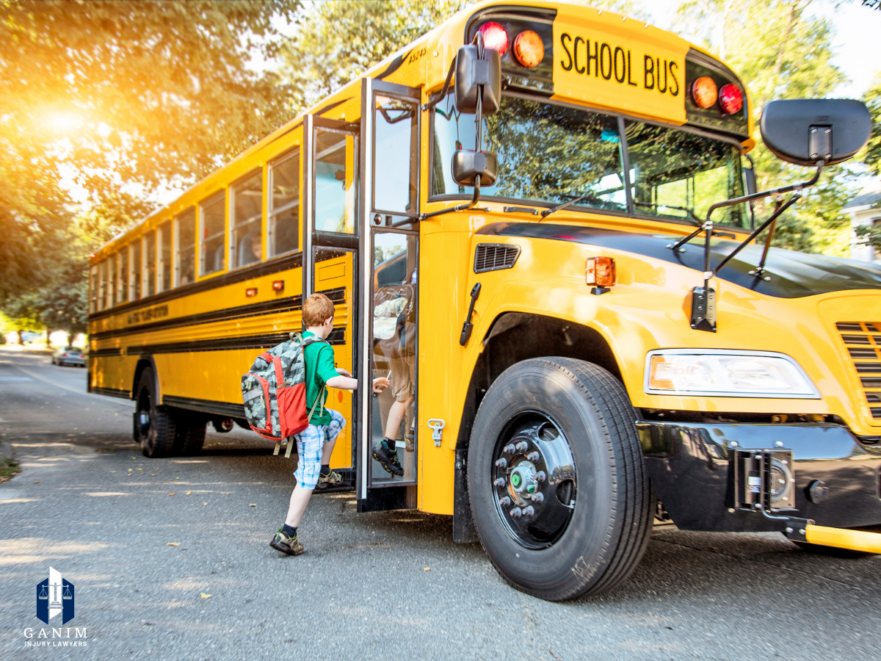School bus safety is a topic that touches the hearts of many, especially parents who entrust their children’s safety to these familiar yellow vehicles every day. In Bridgeport, Connecticut, this trust is underscored by a pressing concern over school bus accidents. A glance at the statistics reveals a national dilemma that resonates locally. In 2022 alone, school bus-related accidents claimed lives across the country, drawing attention to the urgent need for enhanced safety measures (source). But what about Bridgeport? This post will explore the causes of school bus accidents in Bridgeport, share insights from local experts, and discuss ways parents and schools can work together to improve safety.
Understanding the Causes of School Bus Accidents
Several factors often come into play when it comes to school bus accidents. One significant contributor is driver negligence. Bus drivers must remain vigilant and focused at all times, yet distractions, fatigue, or lack of training can lead to tragic outcomes. In Bridgeport, incidents of drivers losing control, such as the Kolbe Cathedral High School accident, highlight the dire consequences of a momentary lapse in attention.
Weather conditions are also challenging, especially in New England’s unpredictable climate. Rain, snow, and fog can affect visibility and road conditions, making careful driving essential. School buses are large vehicles that require more stopping distance and careful handling under adverse weather conditions.
Another factor that cannot be overlooked is vehicle maintenance issues. Buses that are not regularly inspected and maintained are more likely to experience mechanical failures. Ensuring that all school buses are in top condition is a critical step in preventing accidents and ensuring the safety of young passengers.
Impact of School Bus Accidents on Families and Communities
When a school bus accident occurs, its impact extends far beyond the immediate physical harm. For families, the consequences can be life-altering. Injuries sustained in bus crashes, such as concussions, broken bones, and other serious trauma, require medical attention and recovery time, affecting the child’s education and family dynamics.
Communities also feel the ripple effects. School bus accidents can instill fear and anxiety among parents, leading to decreased trust in public transportation systems. This can result in a greater number of parents opting to drive their children to school, increasing traffic congestion and environmental impact.
The psychological impact on children, families, and the community is profound. Addressing these concerns requires a holistic approach that acknowledges the emotional and social dimensions of school bus accidents.
Legal and Safety Regulations in Connecticut
Connecticut has established specific laws and safety regulations to mitigate the risks associated with school bus travel. These include stringent licensing requirements for bus drivers, regular bus inspections, and compliance with safety standards.
The state’s commitment to safety is evident in its adoption of advanced safety features in school buses, such as lap-and-shoulder belts and emergency protocols for drivers. These measures aim to protect children and ensure a secure travel experience.
However, regulations alone are not enough. Consistently enforcing these laws and holding all stakeholders—from bus companies to school administrators—accountable for safety compliance is essential.
Prevention Strategies for Parents and Schools
Parents and schools have a pivotal role to play in enhancing school bus safety. For parents, educating children about bus safety rules and encouraging them to remain seated, avoid distractions, and follow the driver’s instructions is vital.
Schools can implement policies that promote vigilance and accountability among bus drivers. Regular training sessions and workshops can keep drivers informed about the latest safety practices and equip them to handle emergencies effectively.
Collaboration between parents, schools, and transportation authorities can foster a culture of safety. By working together, they can identify potential risks and develop strategies to protect children on their daily journeys.
Insights from Local Experts and Officials
Local experts and officials in Bridgeport are actively working to improve school bus safety. According to transportation officials, ongoing assessments of bus routes, driver performance, and vehicle maintenance are crucial steps in ensuring safety.
Community meetings and forums provide platforms for discussing concerns and sharing ideas. Through collaboration and open dialogue, Bridgeport aims to enhance its safety protocols and reduce the incidence of school bus accidents.
Local initiatives focus on leveraging technology, such as GPS tracking and real-time monitoring, to enhance oversight and response times in critical situations.
Real-Life Examples of School Bus Accidents
The recent Kolbe Cathedral High School bus accident is a stark reminder of the need for continuous improvement in safety measures. This incident resulted in multiple injuries, including broken bones and concussions, emphasizing the need for preventative action (source).
Such examples underscore the importance of proactive strategies and the commitment to learning from past incidents. They highlight the necessity for vigilance and dedication to safeguarding the well-being of children.
Real-life stories of resilience and recovery also inspire communities to advocate for change and support initiatives that prioritize safety.
Injured in a School Bus Accident? Ganim Injury Lawyers Can Help
If you or a loved one has been involved in a school bus accident, seeking legal guidance is crucial. At Ganim Injury Lawyers, our team of experienced attorneys is dedicated to advocating for the rights of those injured due to negligence.
We understand the emotional and financial toll of such accidents and strive to secure maximum compensation for our clients. Contact us today for a free consultation and let us help you on your road to recovery.
